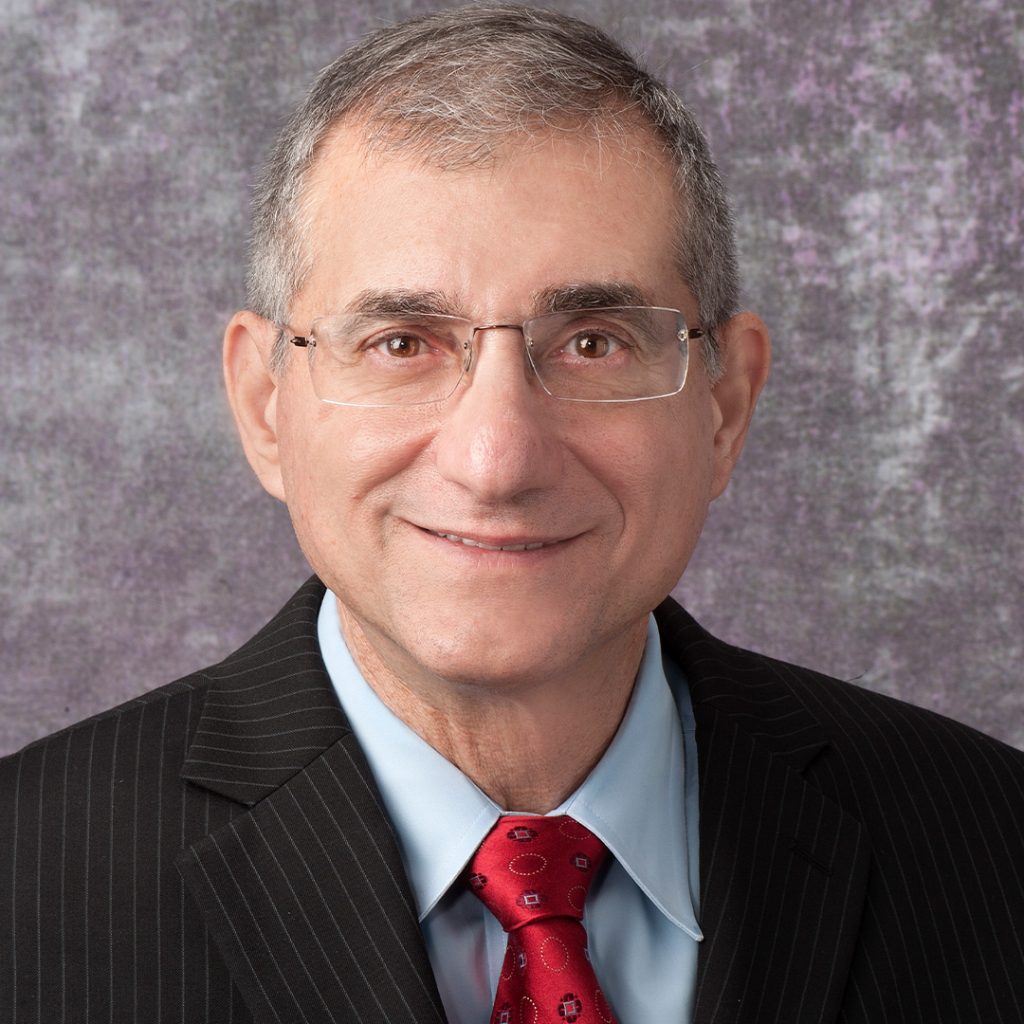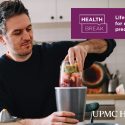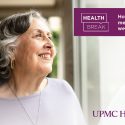Health Break: What to know about bone health and osteoporosis

A podcast for UPMC Health Plan members, Health Break is your quick guide to caring for your mental and physical health, prioritizing wellness, and making the most of your health insurance plan.
Episode 43: Take a Health Break with Dr. Nick DeGregorio
It’s easy to take our bones for granted—until they become brittle. Tune in to learn about osteoporosis. We’ll discuss causes and risks, tests and treatment—and ways to care for your bones.
Episode transcript:
Camille: Welcome to Health Break by UPMC Health Plan, your quick guide to health, wellness, and how to make the most of your health insurance plan. I’m your host, Dr. Camille Clarke-Smith. This is your…Health Break.
In this episode, Dr. Nicholas DeGregorio takes a Health Break to have a comprehensive discussion on osteoporosis. He will discuss everything from symptoms and causes to detection and beyond. Dr. Nick, thank you for taking a Health Break with us today.
Dr. DeGregorio: Well, thanks for inviting me to talk about this important topic.
Camille: Let’s get started. What is osteoporosis and what causes it?
Dr. DeGregorio: The origin of the word osteoporosis speaks to its meaning. “Osteo” refers to bone. “Poros” is a Greek word meaning porous, or many open holes or spaces. And “osis” is from Latin, meaning a state of disease. So osteoporosis is a disease of the bone in which the bone has become weak and brittle so that a minor fall or trauma can result in a fracture.
The inside of our bones really looks like a honeycomb with tiny spaces surrounded by walls. And in normal bone, the walls on each space, which are called the trabecula, are thick and strong, and the spaces are very small. But in osteoporotic bone, those trabecula become thin and the spaces become large. And that results in a loss of this structural integrity and a weakening of the bone.
And osteoporotic fractures can commonly occur in the hip, the spine, the wrist, but they can occur in any number of areas. As an example, if the bones are very brittle and you bend sharply or you cough real hard, you can actually fracture a rib. And those fractures that result from a minor trauma, particularly if falling from the standing position, are called fragility fractures.
So if you think about it, osteoporosis is caused by a loss of bone tissue, and that bone is living tissue, so it consists of cells that are constantly making new bone and cells that are constantly removing old bone. And if that balance gets disrupted and new bone formation decreases while that bone resorption continues, that’s where we get that overall loss of bone density and strength that leads to osteoporosis.
It’s been said that osteoporosis is a pediatric disease that has geriatric consequences. So again, you get a greater balance of new bone formation from childhood up to the age of about 35. And then after 35 you just steadily are losing bone. So that it’s very important to build up your bone bank early in life so that you have adequate bone reserves and bone strength as you get older.
Camille: Thank you so much for that overview. What are the symptoms that someone with osteoporosis could experience?
Dr. DeGregorio: So osteoporosis is typically a silent disease even as it’s progressing. Commonly, there are no symptoms until a fracture occurs. Symptoms of a fracture include pain, and it depends on the site of the fracture, whether that’s in the back, the hip, the spine, the ribs, or other locations. Osteoporosis can also result in a loss of height, which is why your doctor will typically measure your height when you have checkups. It can also result in sort of a bending and curvature of the spine from fractures in the vertebrae, and those can be associated with either acute or chronic low back pain or general back pain. When a curvature of the spine becomes very severe, it can reduce the ability of the lungs to expand properly, and that can result in less effective breathing.
Camille: Now that we know the symptoms and causes, could you explain how osteoporosis is detected?
Dr. DeGregorio: So osteoporosis is detected with an imaging test called a DEXA, spelled D-E-X-A, and that stands for dual energy X-ray absorptiometry. It takes about 20 minutes. It’s easy and it’s painless. It provides a value called the T-score, and that compares your bone density to that of a healthy 35-year-old with normal bones. Your doctor will discuss the results of that test and will determine along with you whether or not treatment should be considered. So bone density testing is recommended for women over 65 and men over 70 who don’t have risk factors for osteoporosis. But earlier in those who are at risk. It’s important for all people, not only women, but also men, over the age of 50 who have had a fragility fracture to have a DEXA scan as well. And that’s because of that increased risk of a second fracture once you’ve had a fracture over 50.
Camille: Dr. Nick, you mentioned some risk factors. Could you explain what increases your risk for osteoporosis?
Dr. DeGregorio: So there are multiple factors. One is just your sex assigned at birth. Women develop osteoporosis more often than men, but men are not immune. About a third of all fragility fractures occur in men. Women tend to have accelerated bone loss after menopause with about 20 percent of their bone mass lost within seven years of menopause, unless otherwise prevented and treated.
The older you get, the greater your risk of osteoporosis. So age is a factor as well. And race—the white and Asian populations have a higher risk of osteoporosis compared to the Black population. It’s also important if you have a family history of someone with osteoporosis. Having a parent or sibling with osteoporosis puts you at greater risk, especially if your mother or father had a hip fracture. The size of your body frame is important. So people with a small body frame are at higher risk because they just have less overall bone mass.
And then their lifestyle factors. Smoking and drinking excess alcohol significantly increase risk for osteoporosis. A lack of physical activity, and a diet that may be low in calcium and other minerals can contribute to a weakening of the bones over time. Certain medications can increase bone loss as well, and in some cases people may be more genetically prone to develop osteoporosis. So if you think about it, the more risk factors you have overall, the greater risk of developing osteoporosis.
I think a really important point is, if you remember one thing from this discussion is that when you’re over the age of 50 and have a fracture, whether you’re a man or a woman, you have a significantly increased risk of having another fracture even as early as 12 months. So your risk of a second fracture is anywhere from two to five times normal within that first 12 months after a fracture. So if you’re over 50 and you have a fracture, ask your doctor about a bone density test to see if you need to be treated. Treatment for osteoporosis is highly effective. It’s about 90 percent effective in preventing recurrent fractures.
Camille: Now that we understand the risk factors, could you describe what people can do to reduce their risk?
Dr. DeGregorio: Yeah. I think the best treatment for osteoporosis, and any condition for that matter, is prevention. That requires awareness, and in this case, awareness of your bone health and what’s required to keep them healthy. So it’s not easy to think about your bones when they don’t hurt, but it’s important not to take them for granted. Even when bone disease is present, it’s never too late to improve your lifestyle and to improve your bone health. So I think there are several key areas—we think about proper nutrition, exercise, fall prevention, and medication. So again, it’s important to have adequate calcium, magnesium, and vitamin D.
Exercise—remember that bones are dynamic, it’s living tissue. So new bone growth will occur in response to stress. Bones feel stress through weight-bearing exercise like walking or jogging. So regular weight-bearing exercise is really a healthy activity to maintain bone health.
And fall prevention, particularly as people get older. Fragile bones do not like falls. Make sure you see your eye doctor, preserve your good vision. Don’t walk in dark areas. Wear stable non-cushy shoes so you can actually feel the ground as you walk. And then around the home, remove all that clutter and throw rugs; that can help prevent tripping and falling.
And then lastly and importantly are medications. Again, they’re 90 percent effective in preventing fractures. And there are different types of medications. There are medications that reduce the reabsorption of bone. Those are most commonly used. And then there are medications that can help actually to build bone strength, build new bone. Typically, those are reserved if you’re not responding well to the first class of medications that help reduce that resorption of bone.
So it’s important to talk to your doctor about one, whether you need screened for osteoporosis, having that DEXA scan. And then two, based on those results and your risk of future fracture, whether or not you should be treated with one of these medications.
Camille: Dr. Nick, thank you for spending some time with us today and giving us an overview of osteoporosis.
Dr. DeGregorio: Thank you again. It’s been a great opportunity. I just really, again, want to emphasize the importance of this issue, the importance of being aware of your bone health, preventing osteoporosis, being tested, talking to your doctor to see if you need to be tested and/or treated.
Camille: Partner with your doctor on your bone health. See your doctor for routine checkups and recommended health screenings like DEXA scans. You may also want to talk to your doctor about your alcohol use or smoking history.
Find show notes and more information at upmchealthplan.com/podcast. Join us as we continue exploring health, wellness, and how to make the most of your health insurance plan in the next episode of Health Break.
This podcast is for informational and educational purposes. It is not medical care or advice. Individuals in need of medical care should consult their care provider. Views and opinions expressed by the hosts and guests are solely their own and do not necessarily reflect those of UPMC Health Plan and its employees.
Related to this episode:
- Ways to strengthen your bones and prevent osteoporosis
- Preventive screening guide for UPMC Health Plan members
- Contact a Health Care Concierge today for help finding a primary care provider and seeing what screenings you are due for.
- Connect with a health coach for ways to stay more physically active, eat better, and take care of your wellness.
About Dr. Nick DeGregorio:
Dr. Nicholas DeGregorio is an internal medicine physician currently serving as the senior medical director for UPMC for You. Dr. DeGregorio completed his medical school training at the University of Cincinnati School of Medicine, an Internal Medicine Internship and Residency program at the University of Pittsburgh, and a Master of Medical Management degree from Carnegie Mellon University. Additional areas of interest and support he provides at UPMC Health Plan include provider credentialing, quality improvement, patient-centered medical home, value-based reimbursement, opioid use disorder, overdose prevention, opioid use disorder in pregnancy, neonatal abstinence syndrome, and women’s health.
About Dr. Camille Clarke-Smith:
Camille Clarke-Smith, EdD, is a program director in the Quality Improvement, Medicare Stars Department at UPMC Health Plan, where she leads the Medicare Faith and Wellness Program, an 8-week health and wellness challenge. She is also the founder of the nonprofit Transforming the Health of African American Women (THAW) Inc., where the mission is to improve the health and quality of life of African American women and the communities in which they live. Dr. Clarke-Smith earned a doctorate in health and physical activity education from the University of Pittsburgh in addition to a master’s in exercise science and a bachelor’s in psychology and sociology. She is currently pursuing her master’s degree in social work at Carlow University.





